Program Information
Check out below if you’re interested in learning more about our program improvement process, participating sites, department and institutional benefits, and where our graduates have gone.
Program improvement
Our program has developed a program evaluation and improvement process that is active, inviting, and innovative. There are many avenues for giving feedback on the program from semi-annual 1-on-1 meetings with our Program Director, to quarterly program discussions over dinner, to just giving Dr. Detwiller a quick call on the phone. Dr. Detwiller, staff, and department leadership all have open door policies when it comes to feedback about how we can do things differently and actively support and engage with residents to develop solutions to issues. While the entire structure of the program is a reflection of this, the examples below are some of the improvements we’ve made:
- Development of Resident Mindfulness Program: This idea was proposed by our former residents Dr. Natalie Krane in who brought the idea to program leadership and together they created protected time for this program every week for 30 minutes. This program has now been in place for 2 years and will continue to be lead by current residents. Check out the resident wellness section for more information on how our program approaches resident wellness.
- Development of 4-week “OTO” PGY-1 Rotation: In 2016 it came to our awareness that our residents felt underprepared when it came to interpreting imaging studies, and audiograms, as well as feeling like there was a gap between the kind of work they do and the kind of work that the APPs in our field do. A 4-week PGY-1 rotation was developed where residents would spend 2 weeks learning from Dr. Bronwyn Hamilton, a talented neuroradiologist and educator who works closely with our department, 1 week working with the speech language pathologists in the department who are known for their active engagement with patient treatment plans, and 1 week with our busy audiologists who show them how to interpret an audiogram, vestibular testing results, and walk them through CI activation. This rotation is annually assessed and refined.
- Resident evaluations: Starting in the 2020-2021 academic year the program has developed a new process for faculty to provide feedback to residents that both honors our resident and faculty’s dedication to resident success, as well as the time constraints inherent to both roles. Residents now meet with their respective rotation faculty every other month for 15-30 minutes during which the faculty provide direct feedback to the residents about where they are excelling and where they see opportunities for improvement. This person-to-person exchange of feedback offers everyone a chance to have a dynamic discussion that results in meaningful and timely improvements to resident performance while still on rotation. So far this process has been well received and the program was even recognized by the Otolaryngology Resident Review Committee at the ACGME for being an innovative approach to resident evaluation that they look forward to hearing more about.
- Research rotation restructuring: In 2017 it came to the attention of program leadership that residents felt unsupported when it came to the grant submission requirement of their 6 month research rotation. In response the research rotation was restructured from a continuous 6-month research rotation to a 1-month research rotation during PGY-2 year and a continuous 5-month research rotation during PGY-3. Check out our research page for more information on how this improvement has since developed.
Benefits
Each program and institution have unique benefits that they offer their residents. At OHSU we offer full funding and support to any resident who has had a presentation (either podium, or poster) accepted at a conference, this means the program covers the cost of registration, lodging, travel, food, and provides the time off to attend. At the beginning of your residency we also provide you with an educational fund that you can put towards any educational need you may have, this funding paired with a BoardVitals subscription starting in your third year means that our residents have foundational support to succeed academically.
Additionally, our residents receive four weeks of paid vacation, a free meal with every work shift (two when you’re on call), and the ability to request new monogramed white coats and scrubs on an annual basis. Residents also have access to discounted annual parking permits at a location that is convenient for accessing the hospital.
Check out the OHSU Graduate Medical Education Benefits page for more information on our insurance benefits.
Participating sites
The program maintains relationships with the hospitals below as a way to diversify our resident’s experience and support them in deciding where their future career may be.
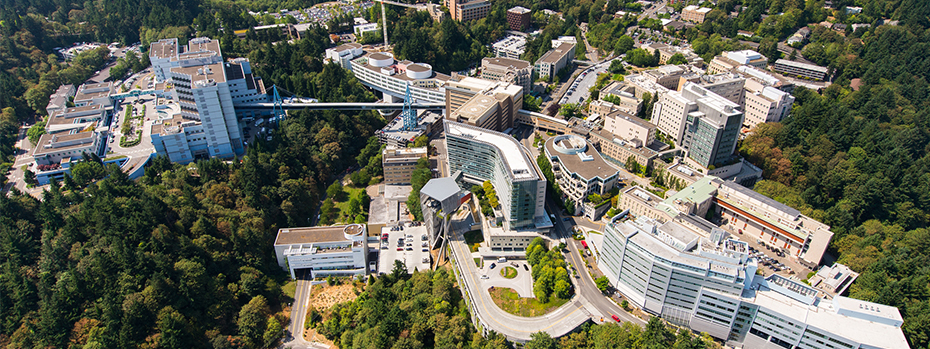
Oregon Health and Science University
The OHSU Marquam Hill and South Waterfront campus is where the residents spend the majority of their 5 years of training. As the only public medical academic center between Seattle and San Francisco, and one of two level 1 trauma centers in the area we receive a high volume of urban and rural, privately and publicly insured, and complex and “simple” patients. OHSU is considered a tertiary care center, that along with our patient mix means that our residents are uniquely prepared to go onto any type of career after graduating.
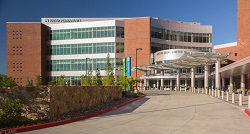
Kaiser Permanent Sunnyside:
During their 4th year our residents spend 4 months at the Kaiser Sunnyside campus in Clackamas, Oregon. This rotation is one of the first rotations during which our residents get to run a clinic independently and experience what it is like to be an operating Otolaryngologist in a hospital system.
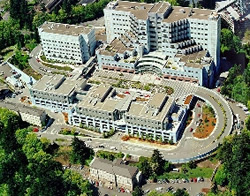
Portland VA Medical Center:
Our residents spend 4 months as a PGY-2 and 4 months as a PGY-4 at the Portland VAMC. This rotation has been structured such that there is time to really develop and hone their medical knowledge and practice. Since many Portland VAMC patients have received all their care through the VA medical system, the continuity of medical records lends itself to this process.
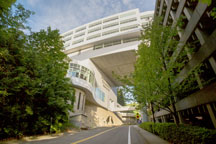
Doernbecher Children’s Hospital:
Doernbecher Children’s Hospital is attached to, and associated with OHSU. It is where our pediatric otolaryngology faculty operate and have clinic. Our residents spend a total of 6 months on a dedicated pediatric otolaryngology rotation between their 1st and 3rd years of training. That time, combined with the pediatric experience they gain while taking prepares them for treating this population after graduating.
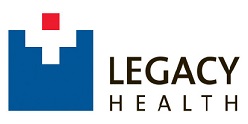
Legacy Emanuel Hospital:
Besides OHSU, Legacy Emanuel is the only other level 1 trauma center in the Portland Metro area, Northwest Oregon area, and Southwest Washington area. Its location in the Portland area means that it receives trauma cases that are different than what comes into OHSU which is why we have our 4th year residents spend a month there with the OMFS and/or Otolaryngology trained attendings. It is a high-volume experience that prepares them for covering trauma call after graduating, and satisfies the curiosity of those interested in reconstructive surgery.
After Residency
The structure of our program prepares our residents to go onto a mix of places and positions after they graduate. Between 2020 - 2024 (past 5 years) we graduated 15 residents, 9 went on to fellowship training programs after graduating, 6 are currently in academic medicine, and 6 hold non-academic positions.